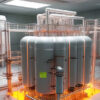In this ever-changing landscape of the energy sector, it's crucial to address the educational and training gaps that utilities face. As the energy transition unfolds, new technologies, regulations, and sustainability goals emerge, requiring a skilled and knowledgeable workforce to navigate the challenges ahead. In this article, we'll explore the importance of investing in education and training programs that equip utilities with the expertise needed to thrive in this dynamic environment. So, buckle up and get ready to power up your knowledge!
The Changing Landscape: Educational Needs in the Energy Transition
As the energy sector undergoes a rapid transformation, driven by the need for sustainable and clean energy sources, the educational needs of utilities are evolving as well. Traditional methods of power generation are being replaced by renewable energy technologies, energy storage solutions are becoming more prevalent, and smart grid systems are revolutionizing the way we produce and consume electricity. With these changes come new challenges and opportunities that require a well-equipped workforce.
One of the key challenges faced by utilities is the need to adapt to this rapidly changing landscape. The skills and knowledge required to operate and maintain traditional power plants may no longer be sufficient in this new era of renewable energy and advanced grid systems. Utilities must now focus on developing expertise in areas such as solar and wind power, battery storage, electric vehicle infrastructure, and data analytics.
Moreover, the energy transition brings about a greater emphasis on sustainability and environmental stewardship. Utilities must understand the intricacies of integrating renewable energy sources into the grid, optimizing energy efficiency, and reducing carbon emissions. This requires a deep understanding of renewable energy technologies, grid management, and environmental regulations.
In addition to technological advancements, utilities must also navigate the complexities of evolving regulatory frameworks and policies. As governments worldwide set ambitious targets for carbon reduction and renewable energy deployment, utilities must stay informed and compliant with these regulations. This necessitates continuous education and training to ensure that utilities are equipped with the knowledge to operate within the regulatory framework.
To address these educational needs, utilities must invest in comprehensive training programs that encompass both theoretical knowledge and practical skills. Hands-on experience and simulations are essential for technicians and engineers to develop the necessary expertise in working with renewable energy technologies and smart grid systems. By providing a learning environment that mirrors real-world scenarios, utilities can effectively bridge the gap between theory and practice.
Developing Comprehensive Training Programs
To meet the educational needs of utilities in the energy transition, it is crucial to develop comprehensive training programs that equip the workforce with the necessary skills and knowledge. These programs should be tailored to the specific needs of utilities and designed to address the challenges presented by the evolving energy landscape.
A key component of effective training programs is providing hands-on experience. This allows technicians and engineers to gain practical skills and apply theoretical knowledge in real-world scenarios. Simulations and practical exercises can be used to mimic various situations, such as troubleshooting renewable energy systems or optimizing smart grid operations. By immersing trainees in these simulated environments, they can develop critical thinking skills and problem-solving abilities.
In addition to hands-on experience, training programs should also include theoretical knowledge. This can be delivered through classroom-style lectures, online courses, or a combination of both. Topics such as renewable energy technologies, energy storage systems, grid management, and cybersecurity should be covered to ensure a well-rounded understanding of the energy transition.
Also, training programs should be designed to encourage continuous learning and professional development. The energy sector is constantly evolving, with new technologies and regulations emerging regularly. Utilities must foster a culture of lifelong learning, where employees are encouraged to stay updated with the latest industry trends and developments. This can be achieved through ongoing training opportunities, certifications, workshops, and online resources.
To enhance the effectiveness of training programs, partnerships with educational institutions can be established. Collaborating with universities, technical colleges, and vocational schools allows utilities to tap into their expertise and resources. This can include joint research projects, guest lectures from industry experts, and internship programs. By leveraging these partnerships, utilities can ensure that their training programs align with industry standards and best practices.
Bridging the Skills Gap: Collaboration and Partnerships
As the energy transition progresses, it becomes evident that bridging the skills gap is important for the success of utilities in navigating this new era. Collaboration and partnerships play a vital role in addressing this challenge and ensuring that the workforce is equipped with the right skills and knowledge.
One effective way to bridge the skills gap is through collaboration between utilities, industry organizations, and educational institutions. By working together, these stakeholders can identify the specific skills and knowledge needed in the energy transition and develop targeted training programs. This collaborative approach ensures that the training provided aligns with industry needs and prepares the workforce for the changing demands of the sector.
Industry organizations, such as trade associations and professional societies, can also play a pivotal role in addressing the skills gap. These organizations often have a deep understanding of industry trends and best practices. They can provide valuable resources, such as industry-specific training materials, certification programs, and networking opportunities. By partnering with these organizations, utilities can tap into their expertise and leverage their resources to enhance their training programs.
Another avenue for collaboration is through apprenticeship and mentorship programs. These programs allow experienced professionals to pass on their knowledge and skills to the next generation of workers. By pairing newcomers with seasoned experts, utilities can facilitate knowledge transfer and provide hands-on learning opportunities. This not only helps develop technical skills but also fosters a sense of camaraderie and professional growth within the workforce.
Moreover, partnerships with educational institutions can bring significant benefits in bridging the skills gap. Universities, technical colleges, and vocational schools are hubs of knowledge and innovation. By collaborating with these institutions, utilities can gain access to cutting-edge research, state-of-the-art facilities, and a pool of talented students. Joint research projects, internship programs, and guest lectures can enhance the educational experience and provide practical exposure to emerging technologies and industry trends.
To ensure the success of collaboration and partnerships, it is essential to establish clear communication channels and foster a culture of knowledge sharing. Regular meetings, forums, and conferences can facilitate discussions and promote collaboration between stakeholders. Additionally, creating platforms for sharing best practices, case studies, and success stories can inspire and motivate the workforce to embrace continuous learning and professional development.
Embracing Technological Innovations: Automation and Digitalization
In the energy transition, embracing technological innovations is paramount for utilities to optimize operations, improve efficiency, and meet the changing demands of the industry. Automation and digitalization are key aspects of this transformation, offering numerous benefits to utilities.
One area where automation and digitalization can make a significant impact is in the monitoring and control of energy systems. Advanced sensors, smart meters, and IoT devices can collect real-time data on energy consumption, generation, and distribution. This data can then be analyzed using advanced analytics and machine learning algorithms to gain insights and make informed decisions. By automating data collection and analysis processes, utilities can improve their understanding of energy patterns, identify inefficiencies, and optimize energy usage.
Automation can streamline operational processes, leading to increased productivity and cost savings. Tasks that were previously manual and time-consuming can now be automated, reducing the risk of human error and freeing up valuable resources. For example, automated systems can monitor energy demand and adjust supply accordingly, optimizing energy generation and reducing waste. Additionally, automated maintenance and asset management systems can detect potential issues and schedule repairs proactively, minimizing downtime and improving reliability.
Digitalization also enables utilities to adopt advanced grid management systems, such as distribution management systems (DMS) and advanced metering infrastructure (AMI). These systems provide utilities with real-time visibility into the grid, allowing for efficient monitoring, fault detection, and load balancing. With a digitalized grid, utilities can respond quickly to fluctuations in energy supply and demand, integrate renewable energy sources effectively, and enhance grid resilience.
Moreover, digitalization opens up new opportunities for customer engagement and energy management. Through smart home technology and energy management platforms, consumers can monitor and control their energy usage, optimize their consumption patterns, and even participate in demand response programs. This not only empowers consumers to make informed decisions about their energy usage but also enables utilities to better manage peak demand and reduce overall energy consumption.
To fully embrace technological innovations, utilities should invest in the necessary infrastructure, software platforms, and cybersecurity measures. Robust cybersecurity protocols are essential to protect critical infrastructure and ensure the integrity of data. Additionally, utilities should prioritize training and upskilling their workforce to adapt to new technologies and leverage their full potential.
Lifelong Learning and Professional Development: A Pathway to Excellence in the Energy Sector
The importance of lifelong learning and professional development cannot be overstated. As new technologies emerge, regulations change, and industry trends evolve, staying updated and acquiring new skills becomes crucial for professionals in the energy sector. Continuous learning not only enhances individual expertise but also contributes to the overall growth and advancement of the industry.
The energy sector is a complex and multifaceted field that encompasses a wide range of disciplines, including electrical engineering, renewable energy, energy management, and grid integration, among others. To navigate this dynamic landscape and excel in their careers, professionals must embrace a mindset of lifelong learning. This involves actively seeking opportunities to expand knowledge, acquire new skills, and stay abreast of the latest developments in the industry.
One avenue for ongoing education in the energy sector is professional certifications. These certifications validate an individual's competency and expertise in a specific area of energy-related work. Certifications, such as the Certified Energy Manager (CEM), Certified Energy Auditor (CEA), or Certified Renewable Energy Professional (CREP), provide professionals with a recognized credential that enhances their credibility and opens doors to new opportunities. These certifications often require a combination of education, work experience, and passing a comprehensive exam, ensuring that certified professionals possess the necessary skills and knowledge to excel in their respective fields.
Workshops and seminars are another valuable resource for continuing education in the energy sector. These events bring together industry experts, thought leaders, and practitioners to share knowledge, discuss best practices, and explore emerging trends. Workshops provide a platform for professionals to learn from experienced individuals, engage in interactive discussions, and gain practical insights into specific topics or technologies. Whether it's a workshop on energy efficiency, grid modernization, or renewable energy integration, these events offer a valuable opportunity to expand one's knowledge base and network with like-minded professionals.
In the digital age, online courses and e-learning platforms have become increasingly popular for professional development. These platforms offer flexibility, allowing professionals to access educational content at their convenience and pace. Online courses cover a wide range of energy-related topics, from fundamentals of energy management to advanced concepts in renewable energy technologies. These courses often include video lectures, interactive quizzes, and assignments to ensure active learning and retention of knowledge. Online learning also provides professionals with the opportunity to connect with instructors and fellow learners from around the world, fostering a global community of energy practitioners.
Furthermore, professional organizations and associations play a vital role in promoting lifelong learning and professional development in the energy sector. These organizations organize conferences, webinars, and networking events, providing a platform for professionals to exchange ideas, share experiences, and learn from industry leaders. They also offer resources such as publications, journals, and research papers, enabling professionals to stay updated on the latest advancements and research in their respective fields.
Leadership and Culture Change: Igniting the Flame of Learning and Innovation in Utilities
In the fast-paced landscape of electrical energy, strong leadership and a supportive organizational culture are paramount to driving educational and training initiatives. The success of these initiatives relies not only on the availability of resources and programs but also on the commitment and engagement of employees at all levels. By fostering a culture of learning, innovation, and adaptation, utilities can unlock their full potential and thrive in an increasingly competitive environment.
Leadership plays a pivotal role in setting the tone for a culture of learning within utilities. Effective leaders understand the importance of continuous improvement and lifelong learning. They lead by example, actively seeking opportunities for their own professional growth and encouraging their teams to do the same. By demonstrating a commitment to learning, leaders inspire their employees to embrace new knowledge, skills, and perspectives. They create an environment where employees feel supported and empowered to take ownership of their personal and professional development.
One strategy for fostering a culture of learning and innovation is to provide employees with access to educational resources and training programs. Utilities can invest in robust learning management systems (LMS) that offer a variety of courses, webinars, and e-learning modules. These resources should cover not only technical topics but also leadership development, change management, and emerging industry trends. By offering a diverse range of learning opportunities, utilities can cater to the individual needs and interests of their employees, fostering a culture of continuous learning and growth.
Another crucial aspect of building a culture of learning within utilities is creating opportunities for collaboration and knowledge sharing. This can be achieved through cross-functional teams, communities of practice, or regular knowledge-sharing sessions. By encouraging employees to share their expertise, experiences, and lessons learned, utilities can tap into the collective wisdom of their workforce. This collaborative approach not only enhances individual learning but also promotes innovation and problem-solving within the organization.
To drive culture change and promote learning, utilities must invest in effective communication and change management strategies. Leaders should clearly articulate the benefits of a culture of learning, emphasizing how it aligns with the organization's goals and values. Regular communication channels, such as newsletters, town hall meetings, or internal social platforms, can be used to share success stories, highlight learning opportunities, and recognize employees who demonstrate a commitment to learning and innovation. By celebrating and rewarding learning achievements, utilities can reinforce the importance of continuous improvement and foster a positive learning culture.
In addition, leaders must be open to feedback and receptive to new ideas. They should create a safe space where employees feel comfortable sharing their thoughts, suggestions, and concerns. This open dialogue promotes a culture of innovation, as employees are encouraged to challenge existing practices, propose new solutions, and explore creative approaches to problem-solving. By embracing a growth mindset and valuing diverse perspectives, leaders can create an environment that nurtures innovation and adaptability.
Addressing Workforce Diversity and Inclusion: Unlocking the Power of a Diverse Energy Sector
The energy sector, like many other industries, recognizes the importance of diversity and inclusion in creating a thriving and innovative workforce. Embracing a diverse and inclusive workforce not only brings a range of perspectives and experiences to the table but also fosters creativity, enhances problem-solving capabilities, and drives organizational success. In order to attract and retain talent from underrepresented groups, the energy sector must proactively implement initiatives that promote diversity, equity, and inclusion.
To begin with, it is crucial for energy companies to develop comprehensive diversity and inclusion strategies that are integrated into their overall business objectives. These strategies should go beyond mere compliance with diversity quotas and instead focus on creating an inclusive culture where all employees feel valued and respected. By fostering an environment that celebrates differences and encourages collaboration, energy companies can attract a broader pool of talent and unlock the full potential of their workforce.
One key initiative in attracting and retaining talent from underrepresented groups is the implementation of targeted recruitment programs. Energy companies can establish partnerships with educational institutions, scholarship programs, and community organizations to actively recruit individuals from diverse backgrounds. By actively seeking out talent from underrepresented groups, companies can tap into a wider talent pool and create opportunities for individuals who may have traditionally faced barriers to entry in the energy sector. Additionally, energy companies can consider revising their job descriptions and qualifications to eliminate any unintentional biases that may discourage diverse applicants from applying.
Another important aspect of promoting diversity and inclusion is the creation of mentorship and sponsorship programs. These programs provide opportunities for underrepresented employees to connect with experienced leaders within the organization who can offer guidance, support, and advocacy. By pairing employees from underrepresented groups with mentors or sponsors who can provide career advice and help navigate the organizational landscape, energy companies can foster a sense of belonging and create pathways for career advancement.
Moreover, organizations must prioritize the development of inclusive leadership and cultural competence. Leaders play a critical role in setting the tone for diversity and inclusion within the workplace. By undergoing diversity and inclusion training and actively promoting inclusive behaviours, leaders can create an environment where all employees feel safe, respected, and empowered to contribute their unique perspectives. This, in turn, strengthens the organization's ability to attract and retain talent from underrepresented groups.
In addition to internal initiatives, energy companies can also engage in external partnerships and collaborations to support diversity and inclusion in the industry. This can involve participating in industry-wide diversity and inclusion initiatives, sponsoring events and conferences that promote diversity, and supporting organizations that focus on empowering underrepresented groups in the energy sector. By actively engaging with the broader community, energy companies can demonstrate their commitment to diversity and inclusion and inspire others to do the same.
Overcoming Challenges and Building a Skilled Workforce: Empowering Utilities for Success
The utility sector plays a critical role in providing reliable and sustainable energy to communities around the world. However, one of the key challenges faced by utilities is addressing the educational and training gaps that exist within their workforce. These gaps can hinder the sector's ability to adapt to evolving technologies, meet customer expectations, and navigate the complexities of the energy landscape. To overcome these challenges and build a skilled workforce, utilities must implement effective strategies and adopt best practices that empower their employees to thrive.
One common challenge faced by utilities is the rapid pace of technological advancements. As new technologies emerge, utilities must ensure that their workforce has the skills and knowledge to effectively operate and maintain these systems. This requires ongoing training and development programs that keep employees up-to-date with the latest industry trends and best practices. By investing in continuous learning and development initiatives, utilities can bridge the educational gaps and equip their workforce with the necessary skills to embrace new technologies.
Another challenge is the changing demographics of the workforce. Many utilities are grappling with an aging workforce and a shortage of younger, skilled professionals entering the industry. To address this challenge, utilities can implement targeted recruitment strategies that attract a diverse range of talent. This can include partnering with educational institutions to develop relevant training programs, offering apprenticeships or internships to students, and actively promoting careers in the energy sector. By proactively engaging with the next generation of workers, utilities can build a pipeline of skilled individuals who are ready to contribute to the industry.
Additionally, utilities face the challenge of retaining skilled employees. As the energy sector becomes more competitive, employees may be enticed by opportunities in other industries. To mitigate this risk, utilities can focus on creating a positive and inclusive work environment that fosters employee engagement and satisfaction. This can involve offering competitive compensation packages, providing opportunities for career growth and advancement, and implementing work-life balance initiatives. By prioritizing employee well-being and professional development, utilities can increase retention rates and maintain a skilled workforce.
Collaboration and partnerships are also essential for overcoming educational and training gaps in the utility sector. Utilities can collaborate with educational institutions, industry associations, and other stakeholders to develop comprehensive training programs that address specific skill gaps. By pooling resources, knowledge, and expertise, utilities can ensure that training initiatives are aligned with industry needs and provide employees with the necessary skills to excel in their roles.
Also, utilities can leverage technology to enhance training and development efforts. Online learning platforms, virtual reality simulations, and other digital tools can provide employees with flexible and interactive training experiences. These technologies can help utilities overcome geographical barriers, reach a larger audience, and offer personalized learning opportunities. By embracing digital learning solutions, utilities can create a more efficient and effective training environment.
Takeaway
Empowering utilities to overcome educational and training gaps and building a skilled workforce is essential for navigating the complexities of the energy landscape and driving the transition to a sustainable future. By implementing strategic, collaborative, and well-resourced approaches, utilities can bridge the current educational gaps and cultivate a talent pipeline that is ready to power the grid of the future. Emphasizing lifelong learning at all levels of the workforce will facilitate a smooth transition to new clean energy paradigms, ensuring safe, reliable, and sustainable operations.
Thank you for reading. If you have any thoughts or comments on this topic, please feel free to leave them below. We value your feedback and are always eager to hear from our readers.
Until then, may the power be with you!
Editor's note: This article was originally published in December 2023 and has been updated for comprehensiveness.





All comments are moderated before being published. Inappropriate or off-topic comments may not be approved.